Making Sauerkraut: A Pennsylvania Deitsch Tradition
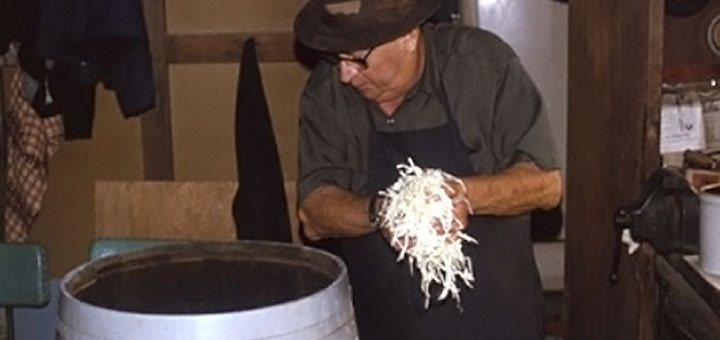
It was hardly a surprise when, this past summer, my parents told me that they were going to start making their own sauerkraut. My family does, after all, have a reputation for tackling some unique projects. However, I couldn’t help but wonder, “How exactly does one make sauerkraut?”
The history of fermented foods goes back at least a few millennia and can be found in a number of different cultures, including those of Europe and Asia. One theory is that the process of using lactic acid fermentation to turn cabbage into sauerkraut actually has its roots in China, and it may have been introduced to Europeans by Genghis Khan.
Whatever its origins, sauerkraut remains a popular food in many Eastern European countries as well as Germany, Switzerland, France, and the Netherlands. The early Hagenbuch family, with its roots in Germany and Switzerland, undoubtedly made sauerkraut and continued to do so after immigrating to Pennsylvania in 1737.
One can easily imagine Andreas Hagenbuch and his family growing cabbage and preparing sauerkraut each fall. They likely stored it in crocks or wooden barrels for later consumption. Without fresh vegetables available during the winter, sauerkraut and other pickled foods were important sources of nutrition for Pennsylvania Deitsch families.
There is even a family story on the topic. It describes how one winter Revolutionary War soldiers stopped at the Hagenbuch homestead and were served cold sauerkraut. While this story is plausible, at this time no hard evidences has been found to substantiate it.
Sauerkraut is not a difficult food to make, though it does require a bit of patience. This fact, along with the rise of mass produced foods, likely led to the decline of homemade sauerkraut by the middle of the 20th century. After all, why would anyone make something that could be purchased conveniently and cheaply at a local grocery store?
In speaking with my maternal grandmother, Ethel “Brandt” Gutshall, I learned that she and my grandfather, Rev. Roy A. Gutshall, were pickling foods and making small batches of sauerkraut through the 1980s. The same was also true on my father’s side of the family, though on an even larger scale.
My great grandfather, Odis G. Faus (“Grandpa Faus”), was known around Shiremanstown, Pennsylvania for his sauerkraut making. According to my father, Mark Hagenbuch, Grandpa Faus would produce around 300 gallons of sauerkraut at a time–enough to fill three barrels! He started by slicing cabbages into fine strips using a homemade cutter constructed from a board and old, sharpened files. Six to ten inches of the prepared cabbage were placed into a barrel with a handful of salt sprinkled on top. The process was repeated.
As the barrels were being filled with cabbage and salt, they were tamped down with a wooden “stomper” in order to compact the layers. When full, the barrel was capped with a layer of cabbage leaves and a lid. Boards were then wedged between the lid and the rafters of Grandpa Faus ‘s workshop. These helped to keep pressure on the cabbage and force out the excess juice, which would be skimmed off from time to time.
300 gallons is a lot of sauerkraut, and Grandpa Faus didn’t make all of this just for his own family. Rather, he sold much of it to make some extra money. His customers included friends at the Loyal Order of the Moose, where he was a member, as well as local eateries, such as Moe’s and The Dog House.
Having grown up in Pennsylvania, I never thought of sauerkraut as a regional food closely tied to the area’s Deitsch heritage. I foolishly believed that, like turkey on Thanksgiving, most Americans honored the tradition of eating pork and sauerkraut on New Year’s Day. As I learned from my Nana, Irene “Faus” Hagenbuch: Pork and sauerkraut are served on New Year’s Day for good luck because pigs root forward into the new year. Chickens and turkeys scratch backward and, therefore, should be served at the end of the year.
It was only after moving to California that I realized just how few people knew of this tradition and how difficult it can be to find decent sauerkraut on the West Coast. Thankfully, it’s easy to make good sauerkraut right at home. Below is the recipe that both my parents and I have tried.
Homemade Sauerkraut in Mason Jars
Makes 4 quarts of sauerkraut and takes 6 weeks
Ingredients:
- 2 large heads of cabbage
- 4 tablespoons salt
- 4 quarts of boiling water
Find 4, 1 quart Mason jars. These are the wide-mouth canning jars with rubber coated metal lids and separate screw on rings. Put 4 quarts of water on the stove to boil.
Cut the heads of cabbage into thin strips. Place the cabbage strips into each jar, tamping down tightly with a wooden spoon. Leave about 1 inch of room at the top of each jar.
Add 1 tablespoon of salt on top of the cabbage in each jar. Then, pour boiling water into the jars, filling to about 1/2 inch below the lip. Seal the jars with the lids and rings. Tighten the rings until they are snug. Don’t force them on too tightly.
Place the jars in a cool, dark place on newspaper or paper towels. This is done to catch any juice that may leak out during the fermentation process. As the jars cool, they will initially seal. However, after a few days, the fermenting sauerkraut will push open the seal slightly to let excess gas escape. Do not open the jars during this time.
After fermenting for at least 6 weeks, the sauerkraut is ready to be eaten. Open a jar and drain off some of the liquid. It won’t appear quite like store-bought sauerkraut, though. This is because it hasn’t been cooked yet.
To prepare, dump the sauerkraut in a pot, and add spices, broth, or flavorings to taste. Heat to boiling and cook for 20 to 30 minutes or until soft.
This past Christmas, my parents stayed with my wife and me in California. One of the highlights of our time together was traveling to visit members on the Faus side of our family who live in Corona, California. We took with us homemade sauerkraut, which I had started fermenting in early November.
On January 1, 2016, we all payed homage to the Pennsylvania Deitsch tradition of eating pork and sauerkraut to welcome in the new year. Being the first time I had made sauerkraut, I was pleasantly surprised to see that all of it was eaten that day. Not surprisingly, the same held true for all of the Grape-Nut ice cream too. Family favorites are known as such for a reason!
I recently started another batch of sauerkraut, which will be ready by March. While this sits quietly and ferments, I can’t help but think of my family–Hagenbuchs, Fauses, Gutshalls, and Brandts–cutting up cabbage, adding salt, and making sauerkraut back in Pennsylvania. It’s a wonderful connection to the past that I’ll never find in a grocery store can.

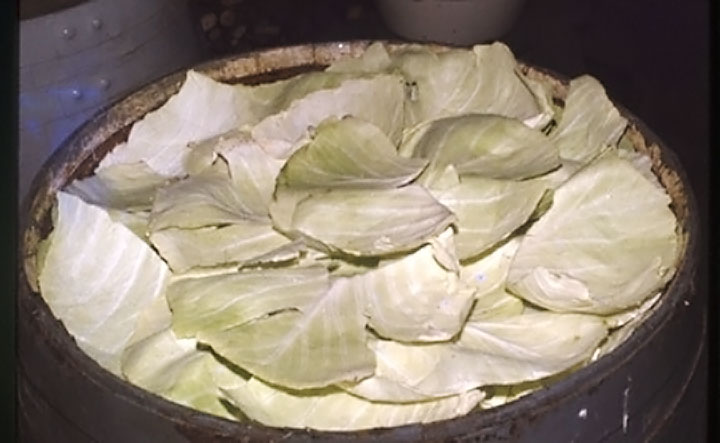
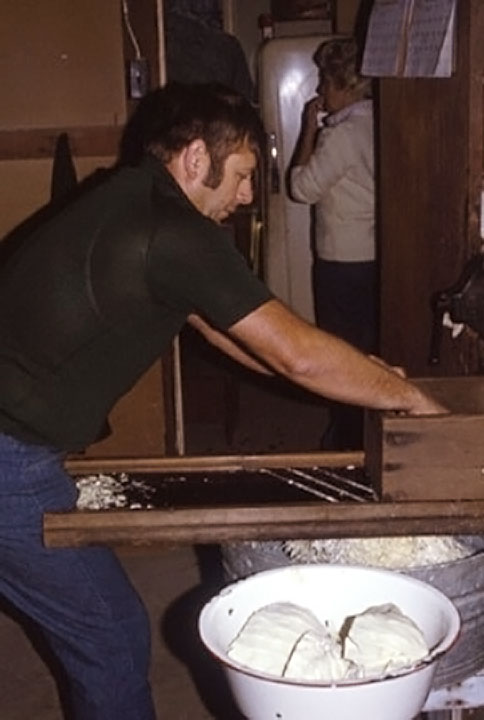
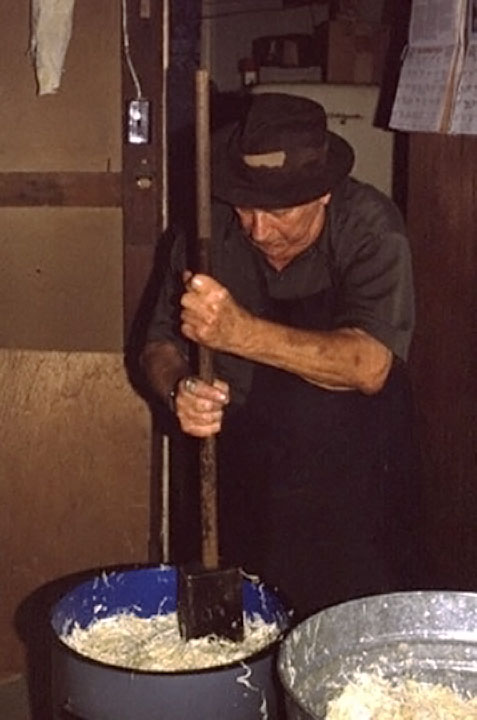
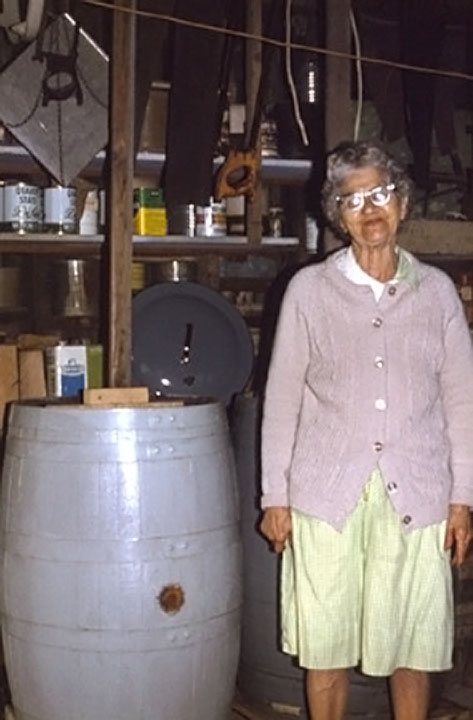
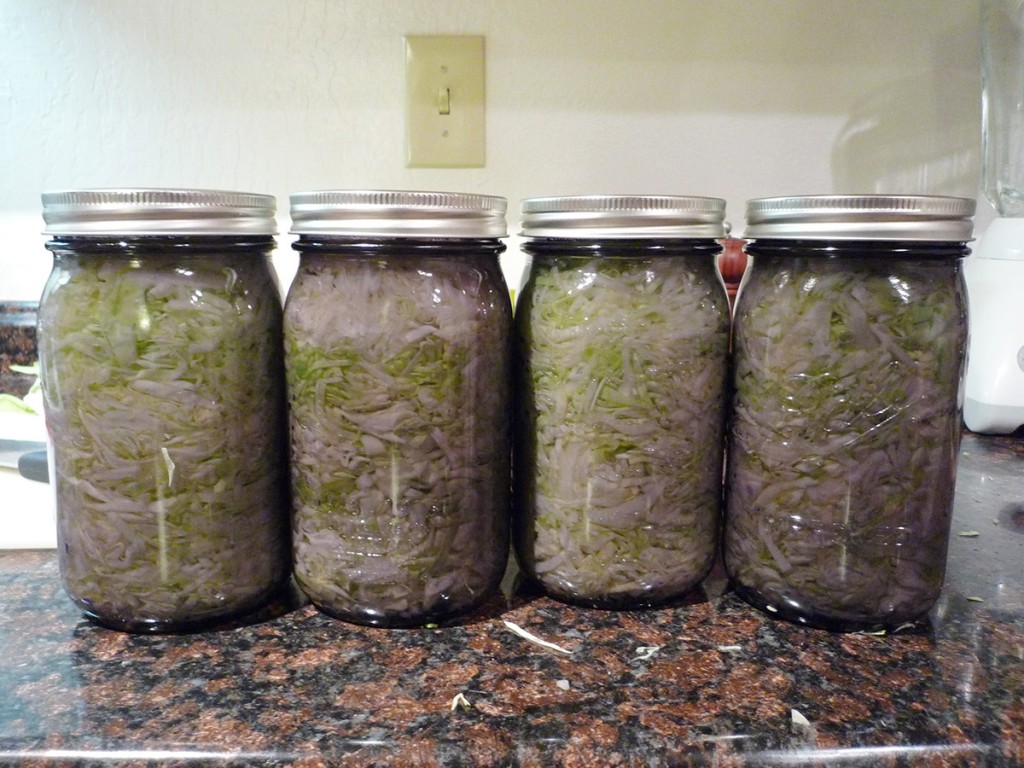
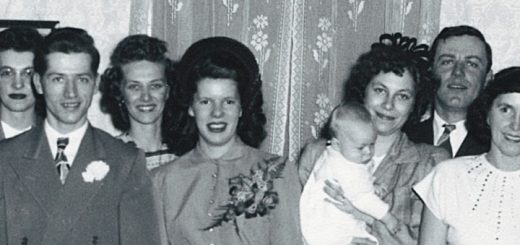
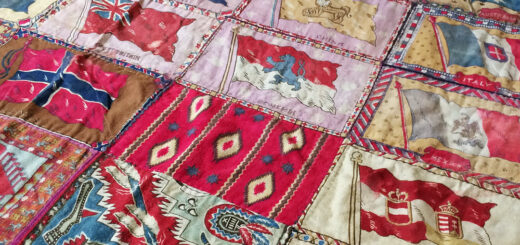
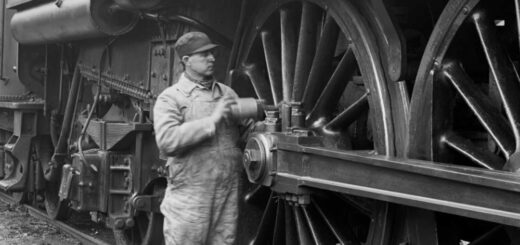













I think I may try this also.
Hi Andrew , As usual a very enjoyable story to read .
I love the photos of Grandpa , Grandma and Uncle Elmer .
Very dear folks whom I miss a lot . Keep up the wonderful story telling !
Aunt Barb
Thanks Andrew for the history. I don’t think I ever saw your great grandpa Faus but from the pictures you posted I can see how your dad favors his grandpa Faus.
Great little article Andrew. I was especially excited to see the picture of the barrel used for making sauerkraut. The use of large, straight sided crocks to make it was a mid-19th century innovation. However, in the 18th century, the tradition was to use wooden barrel containers called “Stenne” in the PA Dutch dialect. This is the first documentation that I have seen that shows that the Stenne tradition continued as recently as the 1980s. I am wondering if the wood affects the flavor of the sauerkraut when compared with the kind made in crocks? Now, Dills Tavern can produce their own authentic brand of sauerkraut made the really old fashioned way in Stenne … 🙂
PS – you mentioned your Graundfather Faus making sauerkraut for the Dog House. Was this the hot dog shop on 2nd Street in Harrisburg? I used to stop in there from time to time in college and such.
Hi Chris! Thanks for your additional insights here about the Stenne. That’s a terrific fact 🙂 I haven’t a clue about the taste, but I would think the wood, like with wine, would change the flavor a bit. Yes, that would be a great experiment for Dills!
My father was the one who mentioned the Dog House to me. He looked it up, but couldn’t find out where it was in the area. Well, I think you just answered our question!
Chris….I always thought the Dog House was on the street in Camp Hill near Fager’s Plumbing, but I could be wrong. Grandpa Faus lived in Shiresmantown at the time he was making all that kraut, so I’m not sure he went into Harrisburg to sell (trade??). I can ask around and find out. Also, good to know about the Stenne…..I would assume it would affect the taste some. They were oak barrels, of course, but not sure what they had been used for before he got them….whisky?? : )
Andrew, A very interesting bit of information. I can’t wait to make my own! I want to try a large batch in oaken barrels, but I may have to wait a few months until I drink all that whiskey. Well, that gives me an incentive (As if I needed one). Thanks again for yet another wonderful article.
Uncle Bob
Mark and Andrew- Are you familiar with the Lewis Miller watercolor collection at the York Co. Historical Society? These are early 19th cent. watercolors done by Lewis Miller that document all kinds of every day life things, especially among the PA Dutch community (but not exclusively). Anyhow, I think one of his watercolors in the book the YCHS produces on his work shows people making sauerkraut in Stenne (pronounced “sten-nah”). There are probably other things you might find useful in those watercolors as well when trying to illustrate aspects of Hagenbuch history.
I love this <3 Sitting here late at night missing my grandpa (elmer faus).
If anyone has any other images of him or information on the Faus family I would greatly appreciate it. I am his only granddaughter.
Hi Ashley. I’ll shoot you an email. We’ve got lots of information on the Faus side of the family 🙂
Nice story. I also tried to make naturally fermented sauerkraut in wooden item. In my case it was an oak bucket, not barrel. But it is the same effect.
All interesting info about this tradition I post here hoohla.cooking/what-is-homemade-sauerkraut